How to Care for a Pothos Plant: The Perfect Houseplant for Beginners
(This post may contain affiliate links).
The beautiful pothos plant also called devil’s ivy or money plant is one of the easiest houseplants to care for.
Known for its trailing vines that can withstand some serious neglect, I recommend it the most to gardening beginners because of how resilient it is; it’s one of the most popular houseplants for this reason.
Grow it in a hanging basket or place it atop your favorite piece of furniture to make any room pop with shades of green.
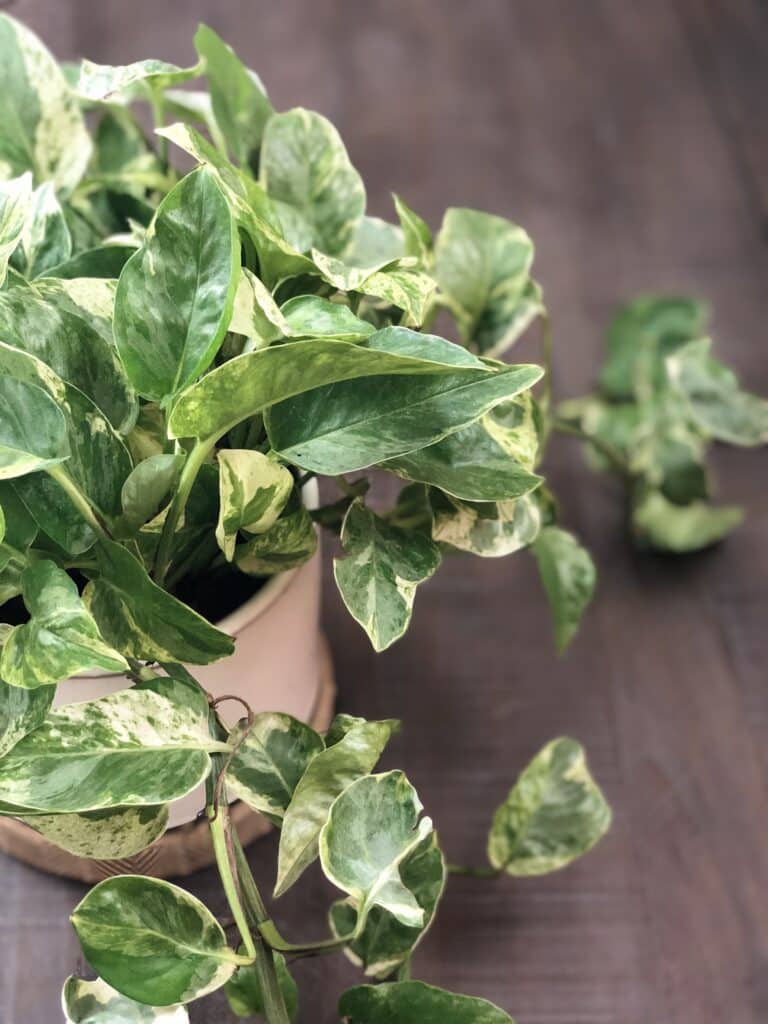
Once you understand how to care for a pothos plant, it’ll grow for you for years and even decades to come.
You don’t even need a green thumb to grow it; it’s essentially the perfect plant and it makes a wonderful gift, too.
In this care guide, we’re going to go over some super-simple tips to keep your plant looking pretty and healthy year-round.
What Makes a Pothos Plant Special
Aside from being a great-looking plant, pothos (epipremnum aureum) has some other wonderful qualities, too. It can go long periods without water, can thrive in low-light conditions, and can also be propagated (just like the peperomia houseplant – another easy indoor plant~).
If properly cared for, it can be with you for a lifetime!
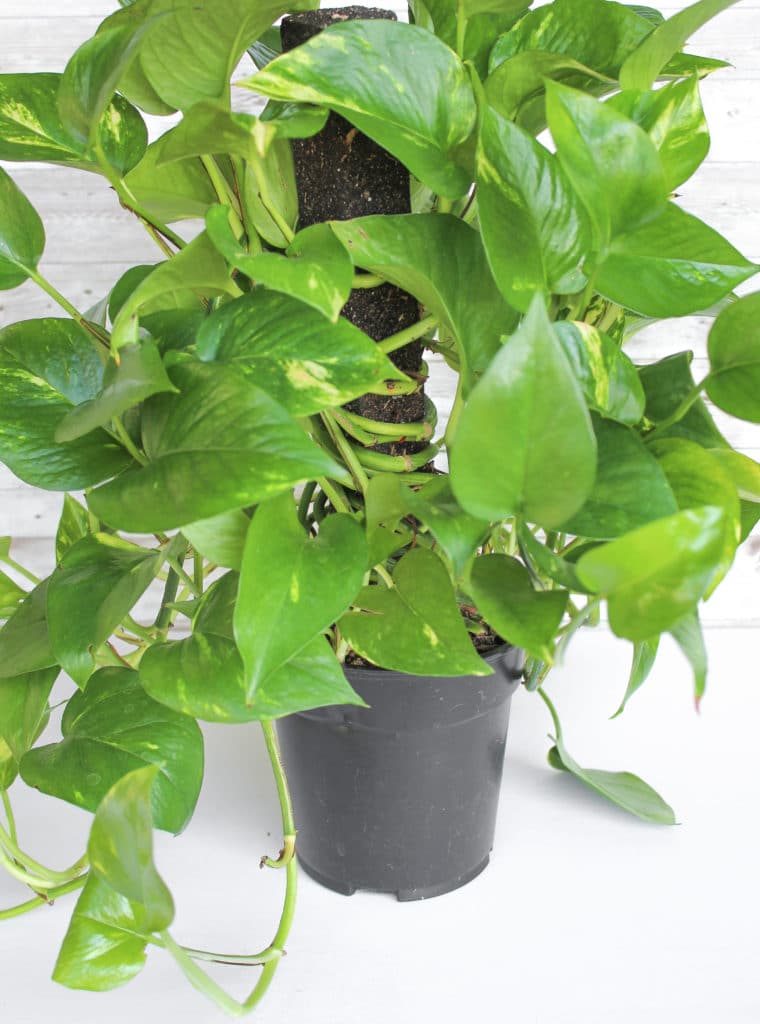
My mom has a large pothos plant that she’s had for over three decades. She loves to tell people how long she’s had it.
She always says something along the lines of, “I’ve had my pothos plant longer than I’ve had my 3 adult kids!”. She bought it when it was a tiny plant in a small pot and now it’s several feet long and drapes down to the floor.
These plants have some serious longevity and they are fast growers, too, during their growing season.
Pothos, also known as Devil’s Ivy, is practically foolproof and it should be at the top of the list for plant beginners.
Even though it’s so beautiful, it’s a low-maintenance plant that doesn’t require a lot of attention from its owner.
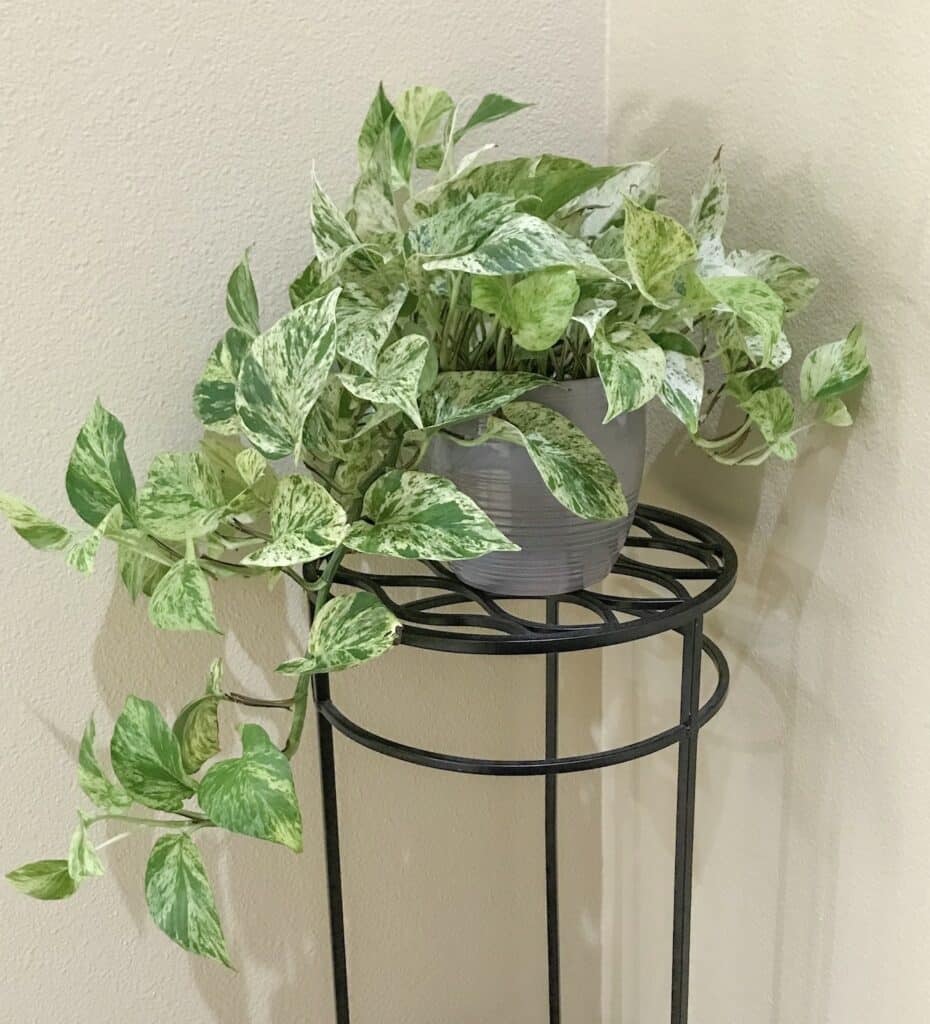
It’s essentially a very independent plant, just like air plants and snake plants.
You can find many pothos varieties in garden centers and online shops but the most popular are the golden pothos, jade pothos, neon pothos, satin pothos, and marble queen pothos.
To properly care for a pothos plant, you need to provide it with a good pot that has a drainage hole, indirect sunlight, and a little water every now and then.
This means you can grow a healthy plant with very little effort on your part.
Its dark-green, heart-shaped leaves can beautify the dullest area of your house and I think many of us know that nothing can liven up a room quite like a live plant.
Place it in a plain area of your house and watch it come alive!
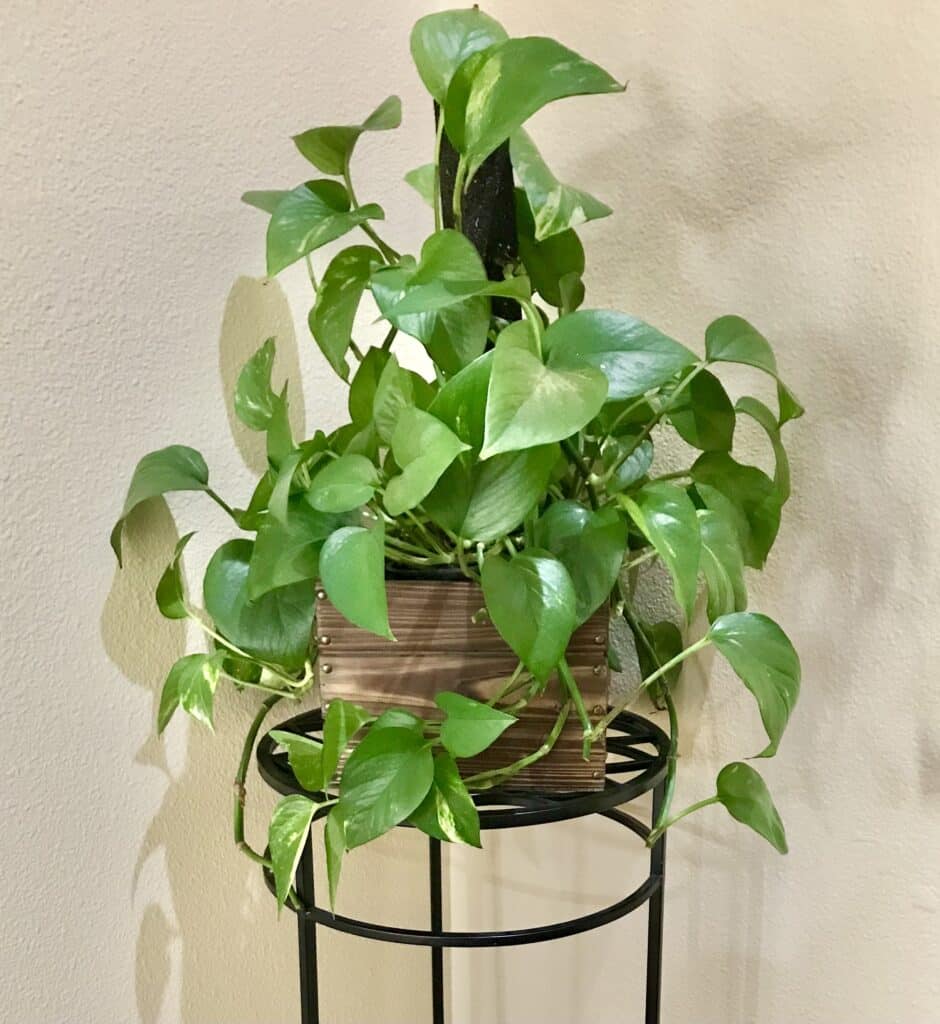
Pothos can also help purify the air. That’s right, one of the best reasons to grow houseplants is that they remove airborne pollutants.
It’s probably what attracts me the most about growing an indoor garden. A natural air purifier? Sign me up.
(*You should know, however, that pothos plants are toxic if consumed, so keep them away from children and pets!)
If you’ve been gardening for several seasons now and live in a cold climate, house plants give you the opportunity to keep your gardening passion alive for the entire year.
By growing pothos indoors, you’ll be able to satisfy your love of gardening in every season.
If you purchase a potted pothos plant that has already begun to grow then you can enjoy it as soon as you bring it home, unlike other forms of gardening.
What Type of Container and Soil Should You Use For a Pothos Plant?
Pothos plants aren’t fussy so you can use any container you want as long as it has a drainage hole at the bottom where excess water can flow through.
Good drainage via drainage holes is crucial to the health of your plant because it helps prevent root rot and common problems like fungus gnats.
If you purchased a potted pothos plant that has already begun to vine, don’t worry about repotting unless it’s root bound.
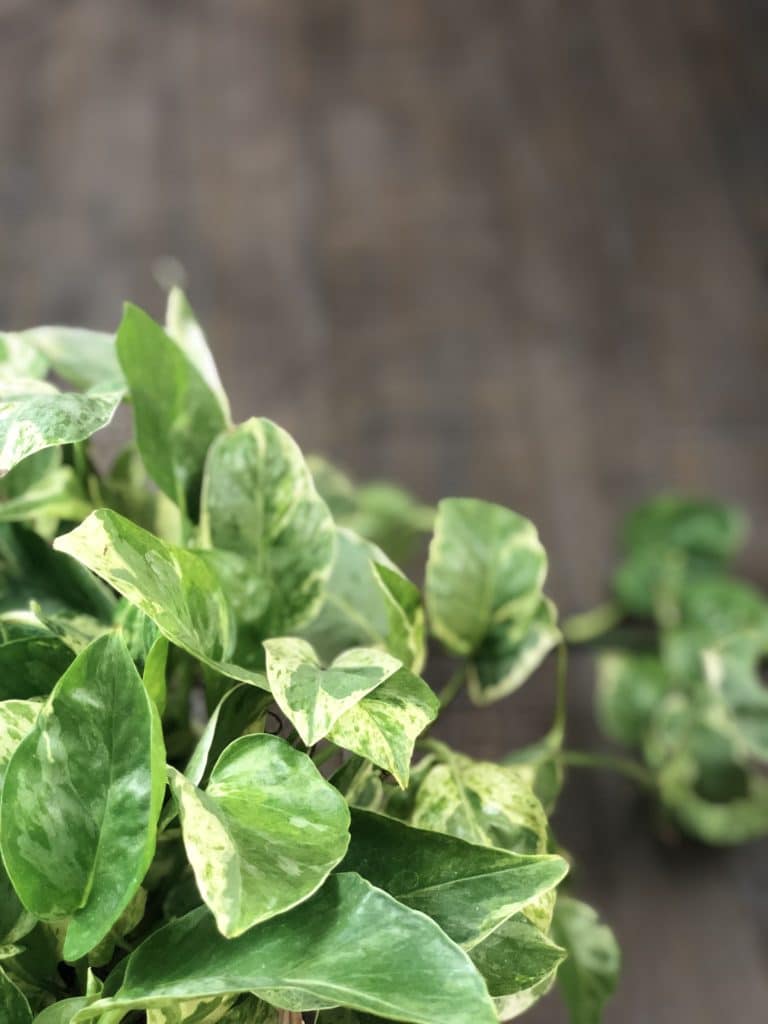
Pothos plants don’t need to be repotted in fresh soil unless the roots have grown so large that they’re preventing water from pouring out through the drainage hole.
Pothos plants actually thrive in smaller containers and can grow several feet of vine without being transferred to a larger pot.
Smaller pots will also help contain the plant so it doesn’t grow overabundantly.
If your pothos came in a plastic container, that’s perfectly fine, just be aware that plastic containers retain more water than clay or terracotta pots, so you’ll have to be careful not to overwater, especially in the winter months.
As far as soil, the best soil for pothos plants is one that is well-draining. A good potting mix for indoor plants will do.
Similar to succulents, pothos plants don’t do well when they sit in soggy soil for days at a time which is why soil is so important.
How to Water a Pothos Plant
Pothos plants are indeed drought tolerant BUT they look and grow their best with a consistent watering schedule.
The best thing about a pothos plant, as it relates to beginners, is that they give off obvious signs of needing water.
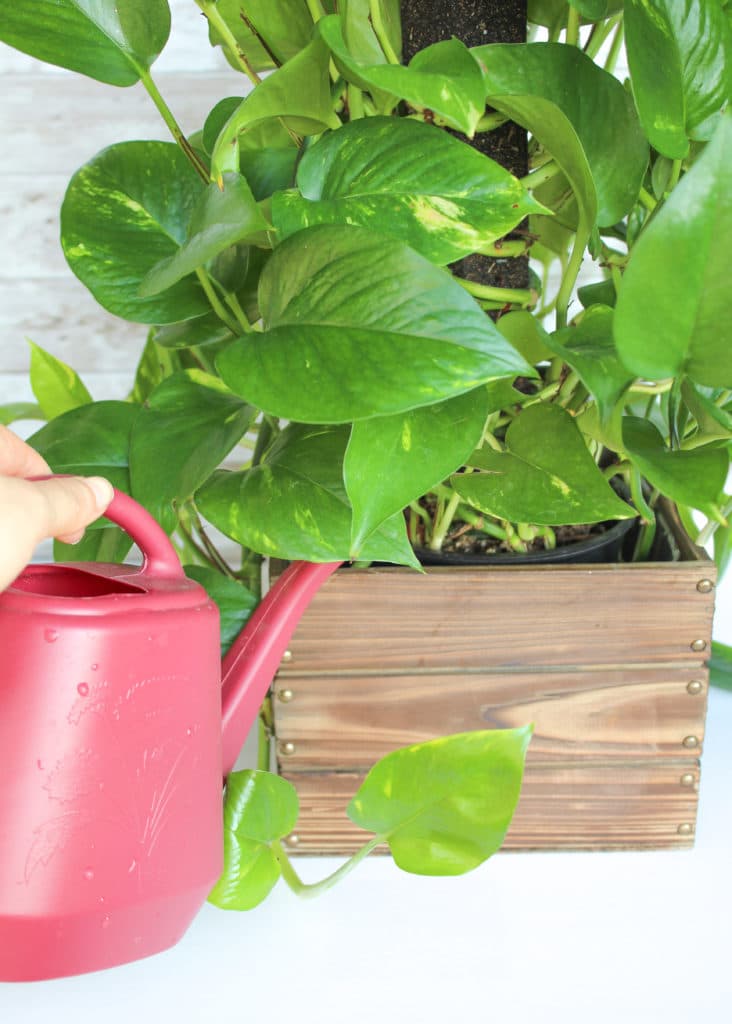
Their stems and leaves begin to droop and go limp when underwatered. When this happens, you need to break out the watering can asap!
You should only water your pothos plant when the top inch or two of the soil feels dry. It’s best to let the soil remain damp but never too wet or water-logged.
Letting the soil go dry for too long will stress out your plant and it’ll lose its vibrancy.
However, too much water without drainage can cause yellow leaves, a sign of over-watering.
Once pothos leaves turn yellow and limp, there’s nothing you can do about it; you’ll have to yank them from the stem and discard them. Several yellow leaves on the plant can indicate root rot.
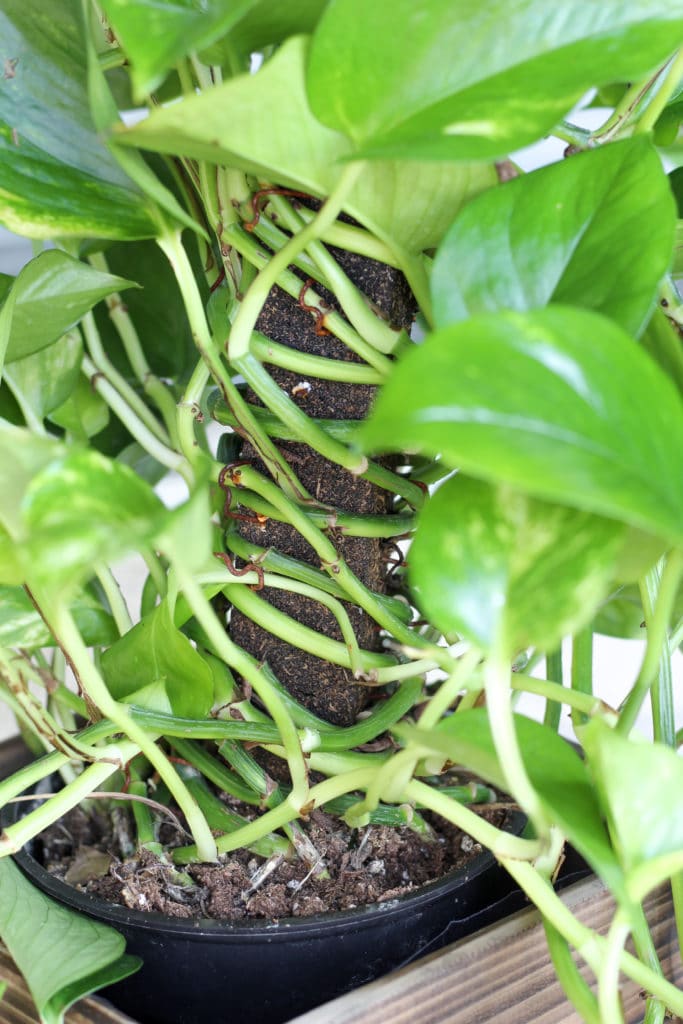
To properly water a pothos plant, pour room temperature water directly onto the soil until you see water escape from the drainage hole.
This will serve as your sign that water has penetrated the soil and provided the roots with enough moisture.
Always toss out the extra water that remains in the saucer because you don’t want the roots of your plant to sit in that water for very long.
As with all indoor plants, sitting in water is not healthy for the root ball. You want the bottom of the pot to sit on a dry surface.
I usually water my houseplants about once a week.
(TIP: Do not spray water onto the leaves of your pothos, this is unnecessary and pointless, too).
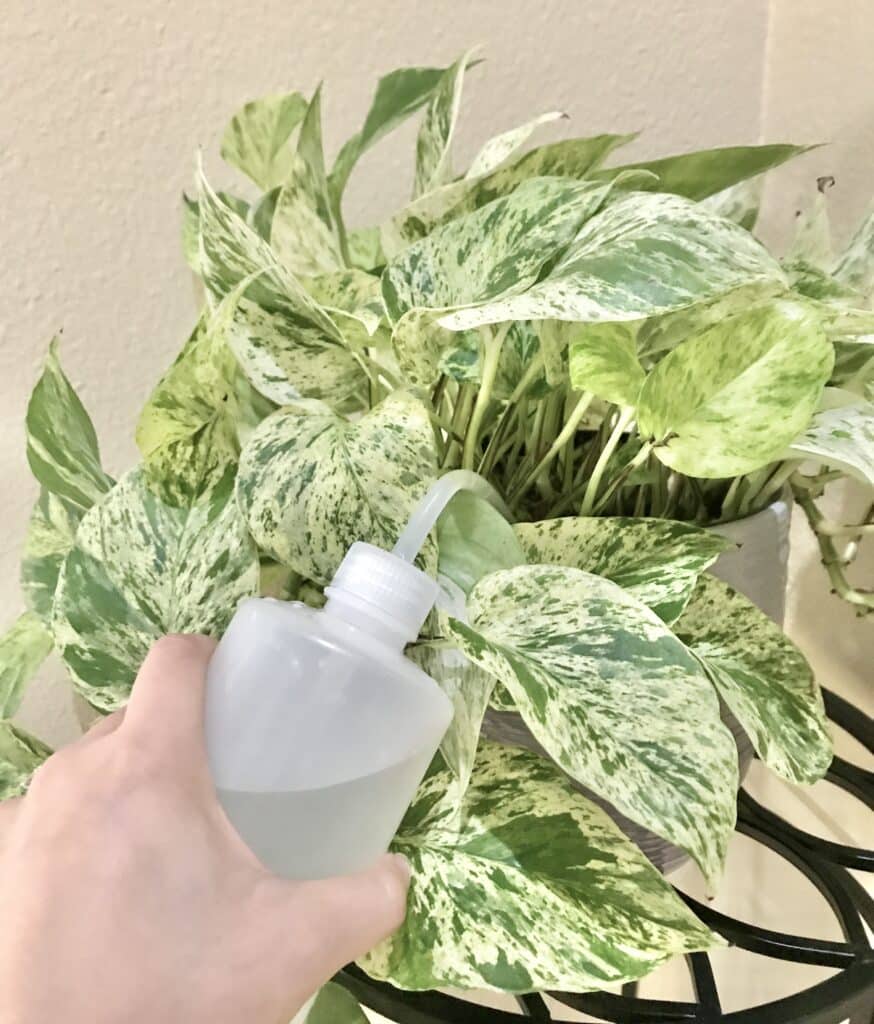
Your plant will let you know whether it’s receiving the right amount of moisture.
If you start noticing that the tips of the leaves are turning black or dark brown as if they’re sunburned, this means you’ve been overwatering your plant.
Brown tips on pothos, as shown below, can happen for many reasons but the most common reason is overwatering.
Stick to a regular watering schedule and your plant should get back on track. Provide good drainage via a drainage hole and only water when you feel dry soil with your finger.
What’s fascinating and helpful about pothos plants is that they’ll let you know what’s going on with them so you can resolve any issues before it’s too late!
How Much Sunlight Does a Pothos Plant Need?
You might think you can’t grow pothos inside your home because you don’t have enough windows that let in sunlight, but you can!
Pothos is a plant that actually thrives in low light conditions. You don’t need a ton of natural light.
It’s why so many people love growing pothos in dim corners of their house, inside of bathrooms, or on their desks in their offices or cubicle.
In fact, pothos plants do better in low-light environments than they do in full, direct sunlight, especially in warm temperatures.
While it doesn’t need much light to survive, a lack of light can cause the plant to grow spindly, with long stretches of stem between each leaf, which isn’t very attractive.
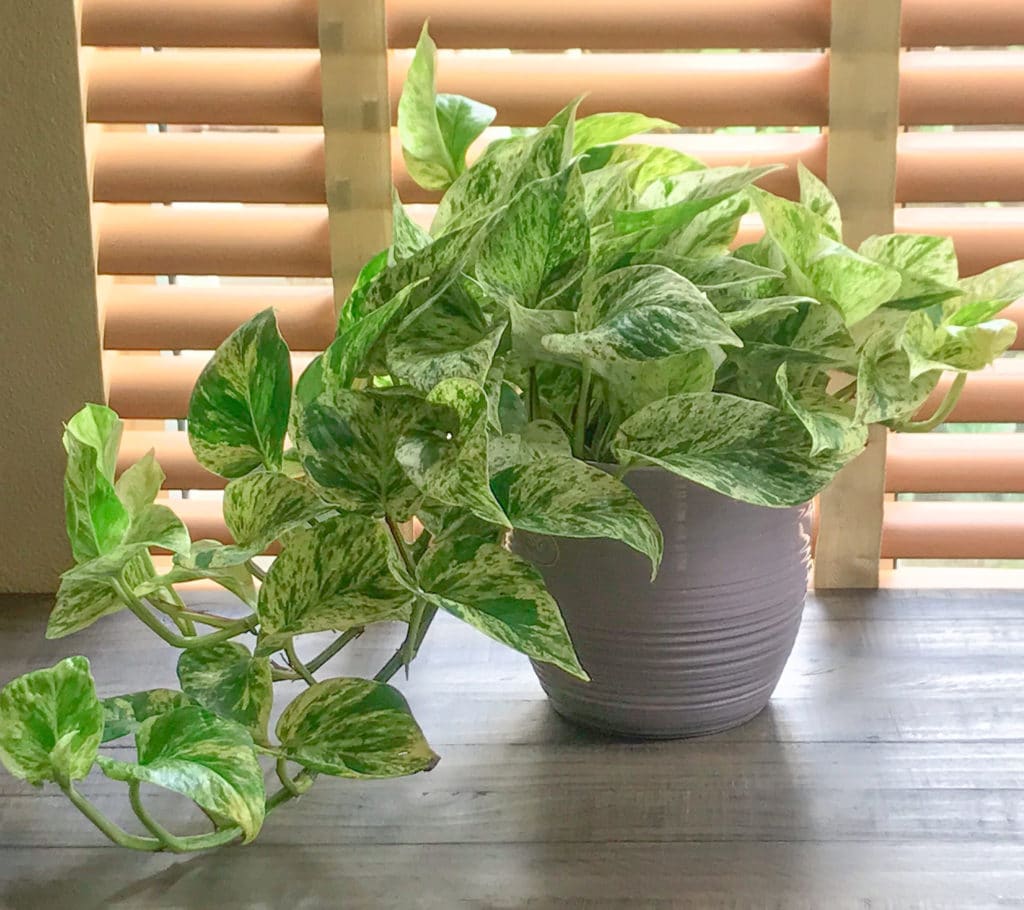
It can also inhibit new growth during the growing season.
Your plant should receive a few hours of bright indirect light each day. The best choice is near a window, if possible.
Pothos plants do best in temperatures of 60 – 80 degrees Farenheight, and shouldn’t be grown in less than 40-degree temperatures.
It is, after all, a plant that grows naturally in a tropical climate, so it’s used to high temperatures and high humidity.
How and When to Apply Fertilizer to Pothos Plants
The pothos plant is a fast grower during its growing season, so it can benefit greatly from added fertilizer.
Applying fertilizer to a pothos plant gives it the nutrients it needs to retain its vibrancy. While a good quality potting mix will have some nutrients, the plant will usually use them up in a few months.
If you’re curious to see how your plant will benefit from regular fertilizing, you can try a liquid fertilizer (I use a liquid kelp fertilizer) that contains nitrogen, phosphorous and potassium.
During the growing season and warmer months of the year, add it to your watering can once a week or once every two weeks. You can follow the instructions on the bottle or use it at half-strength.
Mix the liquid fertilizer with water in your watering can and make it a part of your watering schedule!
TIP: Before fertilizing any plant, always water the soil first. Pouring fertilizer onto dry soil can burn the roots.
Pruning Your Pothos Plant
Houseplants are just about the easiest plants to prune. If you see any dead leaves or leaves that look unattractive, go ahead and prune them off.
Simply yank at the leaf until it pulls off from the stem. You can also use clippers to shorten any overgrown pothos vines that you want to tame and use them to propagate via their leaf node.
Pothos cuttings are a great way to make a new plant to plant in a new pot with fresh potting soil!
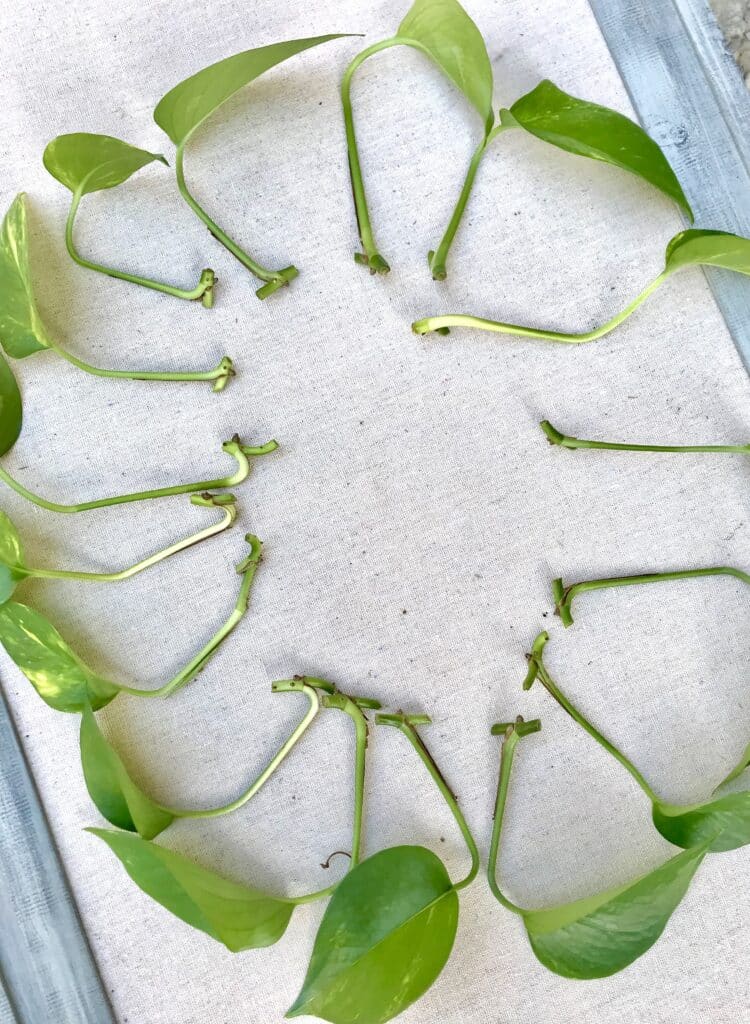
The best time to do this is in the spring; for a step-by-step guide with photos about propagation, visit my post on How to Propagate a Pothos Plant.
Pruning is an important part of photos plant care because it’s what will keep the plant growing the way you want it and will also rid it of dead leaves, which can attract garden pests.
Pests on a Pothos Plant
Pest won’t be a huge problem when growing pothos plants indoors, though you might come across insects such as mealybugs and fungus gnats.
Mealybugs are easy to get rid of, so don’t worry too much. The main focus should be to keep them from spreading from plant to plant.
Mealybugs are white, cotton-like mounds that spread quickly and can spread from plant to plant if not eliminated.
The best way to get rid of these pests is with rubbing alcohol. Simply dip a Q-tip in the rubbing alcohol and swipe the leaves clean.
If the problem is worse than a few mounds, you can spray the leaves and topsoil with water and alcohol.
You can also pour some of the alcohol directly into your watering can with water before watering the soil. This is a great way to stop the problem.
If you notice small gnats flying around your plant, then you’re overwatering and letting the soil remain too soggy.
Pull back on your watering schedule and let the soil dry out completely before you water it again.
To learn about mealybugs and how to eliminate them, read my how to get rid of mealybugs post.
WANT TO REMEMBER THIS? SAVE THIS POST ABOUT HOW TO CARE FOR A POTHOS PLANT TO YOUR FAVORITE PINTEREST BOARD!
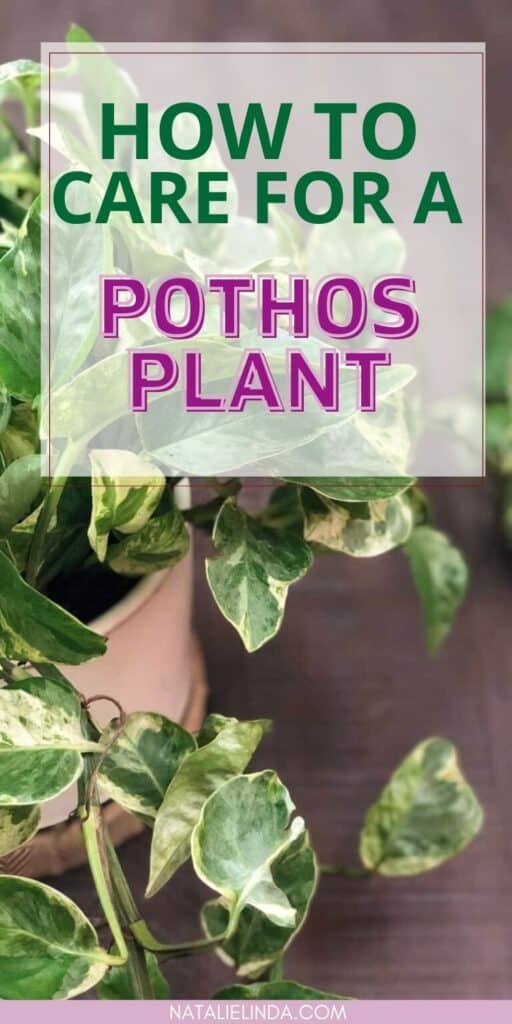
INTERESTED IN LEARNING MORE ABOUT OTHER PLANTS? VISIT THE POSTS BELOW FOR HELPFUL GROWING GUIDES!
How to Care for Succulents
How to Care for a Jade Plant
How to Water Succulents
How to Fertilize Succulents
10 Herbs that are Super Easy to Grow
18 Low Maintenance Perennials
20 Shade Perennials to Beautify Sheltered Areas of Your Yard
16 Vegetables that Grow in Containers

I’d always referred to these as philodendrons. Mine is almost 14 years old.
14 years…WOW! That’s amazing! You’ve taken great care of your plant, Jennifer : )
I grow my pothos in water. They thrive. Usually I have them inside the house.
That’s awesome, Tina! Glad they grow so well for you.
This is by far the most thorough and comprehensive set of instructions I’ve ever received on how to take care of my plant.
Thank you so much!